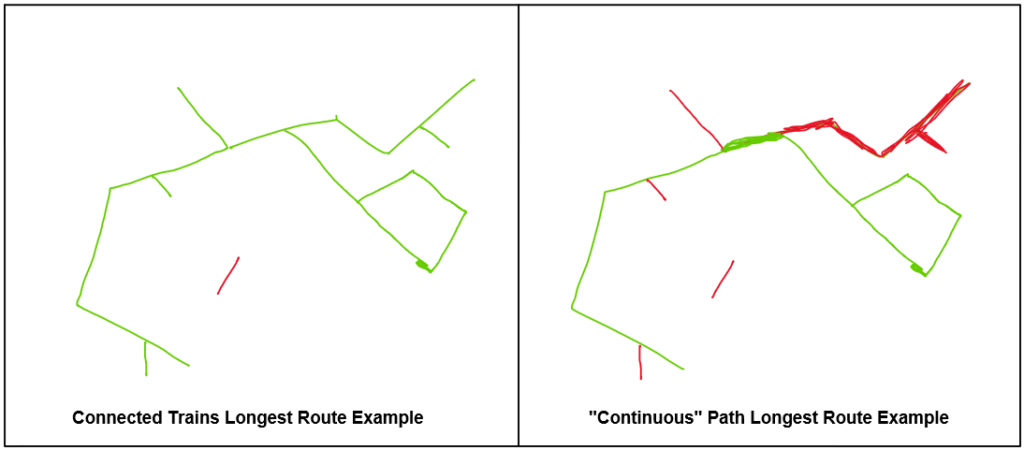Have you been arguing about the correct definition of the longest route in Ticket To Ride? This article will clear up the confusion for you. You can also reference this article to new players when trying to unambiguously explain the longest route card to avoid confusion and conflict.
Definition
The player who has the Longest Continuous Path of routes receives this special bonus card and adds 10 points to his score. When evaluating and comparing path lengths, only take into account continuous lines of plastic trains of the same color. A continuous path may include loops, and pass through the same city several times, but a given plastic train may never be used twice in the same continuous path. In the case of a tie for the longest path, all tied players score the 10 point bonus
Longest Route – Official Rules
It’s not immediately obvious what the designers of the game mean by “continuous lines of plastic trains of the same colour”. Some folks may interpret continuous as connected and others as one flow that never backtracks.

Both interpretations are valid given the ambiguity of the word continuous. However, the picture on the Trans America Express card (the image below) removes the ambiguity of the definition. The longest route includes all the red trains (50 trains) and does not include all the blue trains of the smaller routes branching off. Note that the branches do not count although they are connected.

Some Examples



